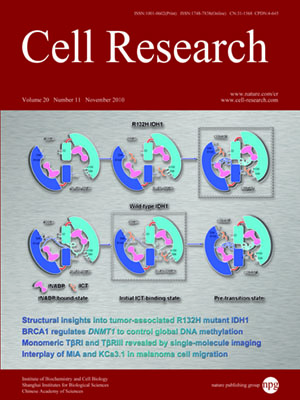
Volume 20, No 11, Nov 2010
ISSN: 1001-0602
EISSN: 1748-7838 2018
impact factor 17.848*
(Clarivate Analytics, 2019)
Volume 20 Issue 11, November 2010: 1263-1275
ORIGINAL ARTICLES
EphA3 functions are regulated by collaborating phosphotyrosine residues
Guanfang Shi1,3, Gang Yue2 and Renping Zhou1
1Department of Chemical Biology, Ernest Mario School of Pharmacy, Rutgers University, Piscataway, NJ 08854, USA
2Department of Oral Biology, New Jersey Dental School, University of Medicine & Dentistry of New Jersey, Newark, NJ 07101, USA
3Current address: Aab Cardiovascular Research Institute, University of Rochester Medical Center, Rochester, NY 14642, USA
Correspondence: Yi Zhang,(yi_zhang@med.unc.edu)
Ephrin ligands interact with Eph receptors to regulate a wide variety of biological and pathological processes. Recent studies have identified several downstream pathways that mediate the functions of these receptors. Activation of the receptors by ephrin binding results in the phosphorylation of the receptor tyrosine residues. These phosphorylated residues serve as docking sites for many of the downstream signaling pathways. However, the relative contributions of different phosphotyrosine residues remain undefined. In the present study, we mutated each individual tyrosine residues in the cytoplasmic domain of EphA3 receptor and studied the effects using cell migration, process retraction, and growth cone collapse assays. Stimulation of the EphA3 receptor with ephrin-A5 inhibits 293A cell migration, reduces NG108-15 cell neurite outgrowth, and induces growth cone collapse in hippocampal neurons. Mutation of either Y602 or Y779 alone partially decreases EphA3-induced responses. Full abrogation can only be achieved with mutations of both Y602 and Y779. These observations suggest a collaborative model of different downstream pathways.
Cell Research (2010) 20:1263-1275. doi:10.1038/cr.2010.115; published online 10 August 2010
FULL TEXT | PDF
Browse 2167


